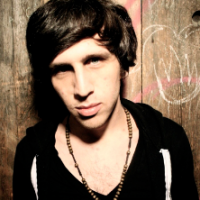Finding Your Zen—and being a Juddhist.
I often would take long car rides in my ’92 white Saab when I was 16-17 through woods and long roads in upstate New York–music blaring, cigarette lit, mind free.
There would always be some adventure, whether it was a dirt road, waterfall, or an awesome rest stop with a great view of mountains overlooking the Hudson River.
I’d daydream, wander, think, clear my head, and let time pass by.
It wasn’t until one day where my roaming brought me to an incredible Buddhist monastery in Carmel, New York. I parked my car, dropped my keys in my pocket, left my butts in the back seat and walked in.
Just as a side-note, this monastery that I am writing about houses the largest statue of Buddha in the United States.
Growing up, I spent a lot of time with one of my mother’s best friends, Agnes, a Buddhist who hailed from Germany growing up in WWII era. She would take me to Chinatown often to eat, shop for incense, walk around, and visit each monastery small to large on nice summer Sundays. I came home one day with incense, beads, and baoding balls.
~
One of the most important things you can do for your vagina and your sex life—to avoid a world of problems later? Check out this device and get a free bag of craft coffee (code; EJCOFFEE)>>
~
I’d often visit her zen-filled home and feel at peace immediately, the 11/12 year old I was. Who knew that little waterfalls, tiny sand boxes, and pretty plants could make me feel a certain way when stepping inside a home at a young age. While sitting there, she would talk about the lifestyle and fundamental concepts of being a Buddhist, growing up in WWII Germany seeing suffering, and how to understand it all.
It was then at that point that my interest in Buddhism grew, right before my Bar-Mitzvah (which trust me, did happen) and teaching Hebrew School at the age of 18. It was the calming nature, the unorganized aspect of prayer, the outlook on life, and general feel of other Buddhists I had met that grew my interest.
Finding this Buddhist Monastery purely by chance was a cure and place to escape all of the troubles of the small town I had lived in, and believe me…there were many. After I got out of my car on that day (completely alone), I wandered through the dozens of acres of land finding many peaceful places to sit — under trees, at the non-traditional cemetery (that we Americans are used to), in front of the lake inside, little tiny sub-monastery’s, and watch interesting people passing by.
I had found myself enjoying this monastery and felt like I was at home. Soon after roaming around, an elder Buddhist who lived on the monastery approached me and asked if I was hungry and offered me a meal at no cost but to sit and talk with him. Being that I was an underpaid record shop employee…free food sounded great to me, the conversation was a bonus.
We sat and talked about what to look for in yourself and how to put it out for the world to see. Each week we would sit down and talk about values, cause and effect, selfishness and suffering, nirvana, and ethics amongst other ways followed by Buddhists. I spent that summer (the summer before I left home) each weekend meditating, concentrating, and focusing on how I was going to change my life—for the better or worse. I left after my first time with a handful of books, all about mindfulness, suffering for the good, the teachings of Buddha, and The Dhammapada (Path of Truth).
To see people come in and out of the monastery at complete peace just to sit, meditate, and pray at will was relieving to see. I feel I had grown up with a structured way of practicing religion.
It was now that I thought, could I be a Jewish Buddhist? Could you have the best of both worlds? After all, both religions are about how we live our life on earth, not an afterlife. There are many articles comparing and contrasting both ideas and ways, but what Buddhism has taught me is to follow your own way, practice on your own, and learn that there is cause and effect as well as selfishness and suffering.
It is not about commitment to me, but a way of living life.

 Share on bsky
Share on bsky






Read 1 comment and reply